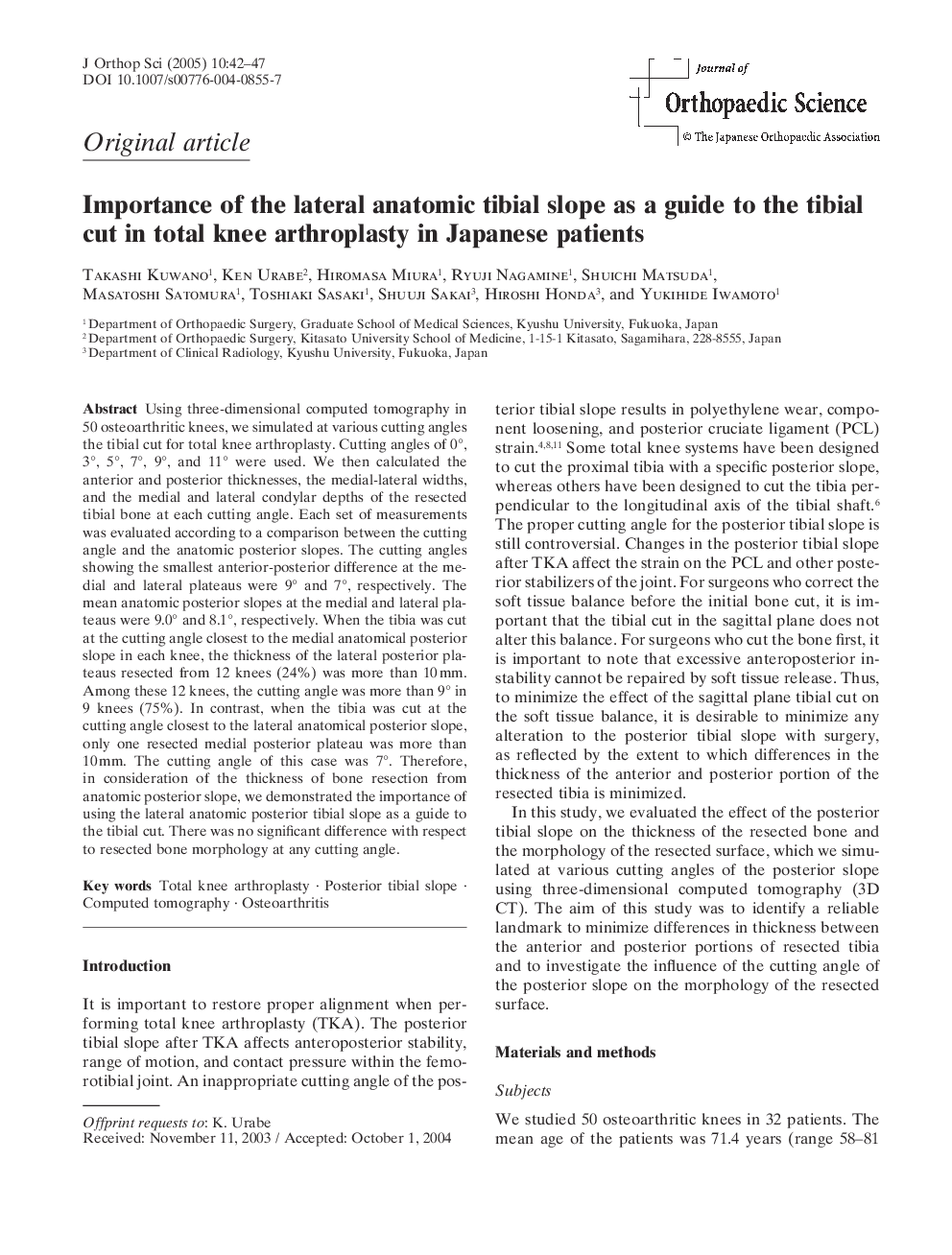| Article ID | Journal | Published Year | Pages | File Type |
|---|---|---|---|---|
| 9354938 | Journal of Orthopaedic Science | 2005 | 6 Pages |
Abstract
Using three-dimensional computed tomography in 50 osteoarthritic knees, we simulated at various cutting angles the tibial cut for total knee arthroplasty. Cutting angles of 0°, 3°, 5°, 7°, 9°, and 11° were used. We then calculated the anterior and posterior thicknesses, the medial-lateral widths, and the medial and lateral condylar depths of the resected tibial bone at each cutting angle. Each set of measurements was evaluated according to a comparison between the cutting angle and the anatomic posterior slopes. The cutting angles showing the smallest anterior-posterior difference at the medial and lateral plateaus were 9° and 7°, respectively. The mean anatomic posterior slopes at the medial and lateral plateaus were 9.0° and 8.1°, respectively. When the tibia was cut at the cutting angle closest to the medial anatomical posterior slope in each knee, the thickness of the lateral posterior plateaus resected from 12 knees (24%) was more than 10 mm. Among these 12 knees, the cutting angle was more than 9° in 9 knees (75%). In contrast, when the tibia was cut at the cutting angle closest to the lateral anatomical posterior slope, only one resected medial posterior plateau was more than 10mm. The cutting angle of this case was 7°. Therefore, in consideration of the thickness of bone resection from anatomic posterior slope, we demonstrated the importance of using the lateral anatomic posterior tibial slope as a guide to the tibial cut. There was no significant difference with respect to resected bone morphology at any cutting angle.
Related Topics
Health Sciences
Medicine and Dentistry
Orthopedics, Sports Medicine and Rehabilitation
Authors
Takashi Kuwano, Ken Urabe, Hiromasa Miura, Ryuji Nagamine, Shuichi Matsuda, Masatoshi Satomura, Toshiaki Sasaki, Shuuji Sakai, Hiroshi Honda, Yukihide Iwamoto,
